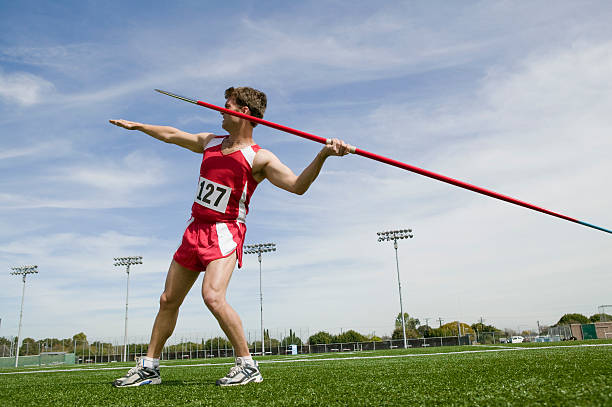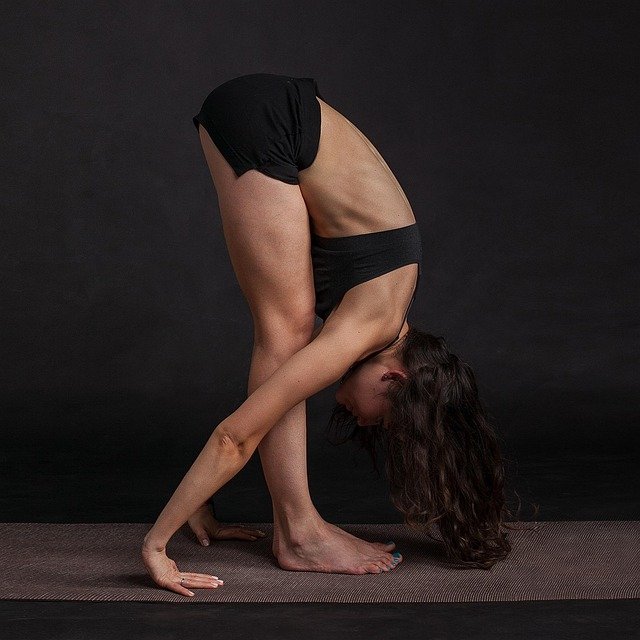Biomechanics of Javelin Throw: Unveiling the Art and Science
The javelin throw, an Olympic event steeped in ancient history, represents a fascinating convergence of raw power, precision, and aerodynamics. This discipline demands a unique blend of strength, speed, and technical prowess, making it one of the most challenging yet captivating events in track and field. As athletes hurl a spear-like implement across vast distances, they tap into a complex interplay of biomechanical principles that have intrigued scientists, coaches, and competitors alike for generations.

Initially, javelins were made of solid wood, but advancements in materials science led to the introduction of hollow metal javelins in the 1950s. These new implements dramatically increased throwing distances, prompting rule changes to maintain the balance between athlete performance and field safety. In 1986, the men’s javelin was redesigned to reduce its aerodynamic efficiency, shifting the center of gravity forward to decrease flight distances and increase the likelihood of proper landings.
Throughout its evolution, the javelin throw has remained a testament to human athletic capability, combining elements of sprinting, throwing, and precise body control. The event’s development has been shaped not only by athletic prowess but also by scientific understanding of biomechanics and aerodynamics, making it a unique blend of ancient tradition and modern innovation.
Biomechanical Principles in Javelin Throwing
The javelin throw is a complex motor skill that relies on the precise coordination of multiple body segments to generate maximum velocity at the point of release. Biomechanical analysis has revealed several key principles that contribute to successful javelin throwing:
-
Kinetic Chain: The throw involves a sequential activation of body segments, starting from the legs, through the trunk, to the throwing arm. This kinetic chain allows for the transfer and summation of forces, culminating in the release of the javelin.
-
Angular Momentum: Throwers generate angular momentum during the approach run and cross-step phases. This rotational energy is then transferred to the javelin during the delivery phase.
-
Elastic Energy Storage and Release: The stretch-shortening cycle in muscles, particularly in the shoulder and trunk, allows for the storage and rapid release of elastic energy, enhancing throwing power.
-
Block and Transfer: The non-throwing side of the body acts as a “block,” creating resistance against which the throwing side can generate force. This block-and-transfer mechanism is crucial for maximizing javelin velocity.
-
Release Parameters: The angle, height, and velocity of release significantly impact the javelin’s trajectory and distance. Optimal release conditions vary based on individual athlete characteristics and environmental factors.
Understanding these biomechanical principles has led to the development of sophisticated training methods and technique refinements, enabling athletes to push the boundaries of human performance in this event.
Phases of the Javelin Throw: A Biomechanical Breakdown
The javelin throw can be divided into several distinct phases, each playing a crucial role in the overall performance:
-
Approach Run: This phase involves a controlled acceleration over a distance of about 30 meters. The athlete builds up speed while maintaining proper body positioning for the subsequent phases. Biomechanically, this phase is about generating linear momentum and preparing the body for the rotational movements to follow.
-
Withdrawal: As the thrower nears the end of the approach, they begin to withdraw the javelin, extending it behind the body. This action initiates the loading of the kinetic chain and prepares for the powerful rotational movements to come.
-
Cross Steps: The athlete performs a series of crossover steps, typically two to four, which serve to maintain forward velocity while positioning the body for the throw. This phase is crucial for generating angular momentum and setting up the block position.
-
Delivery Stance: The thrower plants the front foot firmly, creating a stable base for force transfer. The body forms a tensed arc, with energy stored in the stretched muscles and connective tissues.
-
Delivery: In a rapid sequence, the athlete rotates and extends through the hips, trunk, shoulder, elbow, and wrist. This whip-like action transfers energy up the kinetic chain, culminating in the release of the javelin.
-
Follow-Through: After release, the thrower continues the motion to dissipate forces and prevent injury. This phase also provides valuable feedback on the quality of the throw.
Each of these phases requires precise timing and coordination. Elite throwers exhibit remarkable consistency in their biomechanical patterns across these phases, reflecting years of technical refinement and physical preparation.
Aerodynamics and the Flight of the Javelin
Once released, the javelin’s flight is governed by the principles of aerodynamics. The implement’s design and the thrower’s technique significantly influence its trajectory and distance:
-
Lift and Drag: The javelin’s shape generates lift forces that can extend its flight. However, drag forces also act to slow it down. The balance between these forces is crucial for optimal performance.
-
Angle of Attack: The javelin’s orientation relative to its flight path affects its aerodynamic properties. A slightly positive angle of attack can increase lift and distance.
-
Spin Stabilization: Imparting a slight spin to the javelin helps stabilize its flight path, reducing yaw and pitch oscillations that could decrease distance.
-
Environmental Factors: Wind speed and direction, air density, and even the Earth’s rotation (Coriolis effect) can influence the javelin’s flight, albeit to varying degrees.
-
Magnus Effect: In some cases, the javelin’s spin can create a pressure differential that affects its trajectory, similar to the curve of a baseball pitch.
Understanding these aerodynamic principles has led to refinements in javelin design within the constraints of competition rules. It has also influenced throwing techniques, with athletes and coaches seeking to optimize release conditions for maximum aerodynamic efficiency.
Biomechanical Analysis Techniques in Javelin Throw
Modern biomechanical analysis of javelin throwing employs a range of sophisticated technologies and methodologies:
-
High-Speed Video Analysis: Multiple high-speed cameras capture the throw from various angles, allowing for detailed 3D motion analysis.
-
Force Plate Measurements: Force plates embedded in the runway measure ground reaction forces during the approach and delivery phases, providing insights into power generation and transfer.
-
Electromyography (EMG): Surface EMG sensors record muscle activation patterns, helping to understand the sequencing and coordination of muscle groups during the throw.
-
Inertial Measurement Units (IMUs): Small, wearable sensors provide data on body segment accelerations and rotations throughout the throwing motion.
-
Computer Simulation: Advanced computational models allow researchers to simulate throws under various conditions, exploring the effects of technique modifications without physical trials.
-
Wind Tunnel Testing: Javelin designs and flight characteristics are studied under controlled wind conditions to optimize aerodynamic properties.
These analytical tools have revolutionized our understanding of javelin throwing biomechanics, enabling coaches and athletes to refine techniques based on objective data rather than subjective observations alone.
Training Implications of Biomechanical Insights
The biomechanical understanding of javelin throwing has profound implications for training methodologies:
-
Strength and Power Development: Targeted exercises focus on the specific muscle groups and movement patterns involved in javelin throwing, emphasizing explosive power in the legs, core, and upper body.
-
Flexibility and Mobility: Maintaining optimal range of motion, particularly in the shoulder and trunk, is crucial for achieving proper throwing positions and preventing injuries.
-
Plyometric Training: Exercises that enhance the stretch-shortening cycle help improve power output in the throwing action.
-
Technical Drills: Specialized drills break down the throwing motion into component parts, allowing athletes to refine specific aspects of their technique.
-
Periodization: Training programs are structured to develop different physical qualities at appropriate times, ensuring peak performance during competition seasons.
-
Recovery and Injury Prevention: Understanding the biomechanical stresses of javelin throwing informs recovery strategies and injury prevention protocols.
-
Mental Training: Visualization techniques based on biomechanical understanding help athletes internalize optimal movement patterns.
By integrating biomechanical principles into training regimens, coaches and athletes can work towards maximizing performance while minimizing injury risk.
Technological Innovations in Javelin Design
While the basic form of the javelin has remained consistent due to competition regulations, subtle design innovations continue to push the boundaries of performance:
-
Materials: Modern javelins use advanced composite materials that optimize weight distribution and flexibility characteristics.
-
Surface Textures: Micro-texturing of the javelin’s surface can influence boundary layer airflow, potentially affecting flight characteristics.
-
Grip Design: Innovations in grip texture and shape aim to improve the thrower’s control and power transfer to the implement.
-
Tailpiece Modifications: Within rule constraints, tailpiece designs are refined to enhance stability and reduce drag during flight.
-
Computer-Aided Design (CAD): Sophisticated modeling software allows for precise optimization of javelin specifications within regulatory limits.
These technological advancements, while subtle, can make significant differences at the elite level where margins of victory are often measured in centimeters.
The Future of Javelin Throw Biomechanics
As our understanding of biomechanics and related fields continues to advance, the future of javelin throw promises further refinements and discoveries:
-
Personalized Biomechanics: Advanced analytics may allow for highly individualized technique optimizations based on an athlete’s unique physical characteristics.
-
Real-Time Feedback Systems: Emerging technologies could provide instant biomechanical feedback during training, allowing for rapid technique adjustments.
-
Virtual Reality Training: VR simulations might offer new ways to practice and refine throwing techniques without physical strain.
-
Genetic Insights: Advances in sports genetics could inform talent identification and personalized training approaches for javelin throwers.
-
Artificial Intelligence in Coaching: AI systems might analyze vast amounts of biomechanical data to identify optimal throwing patterns and training strategies.
-
Enhanced Injury Prevention: Deeper understanding of throwing biomechanics will likely lead to more effective injury prevention and rehabilitation protocols.
-
Interdisciplinary Approaches: Increased collaboration between biomechanists, physiologists, psychologists, and materials scientists may yield holistic performance enhancements.
As these frontiers are explored, the javelin throw will continue to evolve, challenging athletes to push the limits of human performance while maintaining the essence of this ancient and noble sporting event.
Conclusion: The Ongoing Quest for Perfection
The biomechanics of javelin throw represent a fascinating intersection of physics, physiology, and athletic skill. From the intricate coordination of body segments to the aerodynamic nuances of the implement’s flight, every aspect of the throw is subject to scientific scrutiny and continuous refinement.
As athletes strive for ever-greater distances, the role of biomechanical analysis becomes increasingly crucial. It provides the foundation for technique optimization, injury prevention, and equipment design. Yet, amidst the science, the javelin throw retains its fundamental appeal – a pure expression of human power and precision, hurling a spear-like projectile across vast distances.
The ongoing research and technological advancements in this field promise to unlock new levels of performance, ensuring that the javelin throw remains a dynamic and evolving discipline. As we look to the future, the quest for the perfect throw continues, driven by the relentless pursuit of excellence that defines the spirit of sport.
In this timeless contest between athlete and physics, the javelin throw stands as a testament to human ingenuity and physical capability. It reminds us that even in an age of technological marvels, the harmonious integration of mind, body, and implement can achieve feats that continue to inspire and amaze.





